 |
 |
 |
| |
The pharmacokinetic interaction between omeprazole and TMC278,
an investigational NNRTI
|
| |
| |
Reported by Jules Levin
9th International Congress on Drug Therapy in HIV Infection, Glasgow, UK, 9-13 November 2008
HM Crauwels,1 RPG van Heeswijk,1 D Kestens,1 M Stevens,1 A Buelens,1 K Boven,2 RMW Hoetelmans1
1Tibotec BVBA, Mechelen, Belgium; 2Tibotec Inc., Yardley, PA, USA
Author Conclusions
Co-administration of omeprazole with TMC278 significantly reduced the steady-state exposure to TMC278 compared with administration of TMC278 alone (by 40% for AUC24h and Cmax and by 33% for Cmin).
These results confirm the pH-dependent bioavailability of TMC278.
TMC278 at steady-state decreased the omeprazole AUC24h by 14%.
Repeated doses of TMC278 150mg qd resulted in a 27% increase in the AUC24h ratio of 5-OH-omeprazole/omeprazole, suggesting a weak induction of CYP2C19 by TMC278 in vivo. This effect is even less likely at the much lower
therapeutic dose of TMC278 (i.e. 25mg qd), and is unlikely to result in clinically
relevant interactions.
All treatments were generally safe and well tolerated.
A dose for co-administration of TMC278 25mg qd and proton pump inhibitors has not been established, and these are therefore currently not allowed in the Phase III trials. As an alternative, and based on a separate DDI study,2
H2-antagonists can be used, if taken 12 hours before or 4 hours after TMC278.
Abstract
TMC278 is a next-generation investigational NNRTI with potent and sustained efficacy through 96 weeks in antiretroviral (ARV)-na´ve patients.1 The current trial evaluated the pharmacokinetic (PK) interaction between omeprazole and TMC278. Omeprazole increases gastric pH, which can affect the solubility and gastrointestinal absorption of TMC278. TMC278 has been shown to induce CYP2C19 in vitro, which may influence the omeprazole PK.
This was an open-label, randomised, two-way, crossover trial in 16 HIV-negative volunteers. In two sessions, separated by a 14-day washout, participants received TMC278 150mg qd alone (11 days) and omeprazole 20mg qd (22 days) with co-administration of TMC278 150mg qd (Days 12-22). All treatments were taken following breakfast. Steady-state 24-hour PK profiles of TMC278 were assessed on the last day of each session, and steady-state 24-hour PK profiles of omeprazole and its metabolite 5-hydroxy(OH)-omeprazole (formed via CYP2C19) were assessed without (Day 11) and with (Day 22) co-administration of TMC278. PK parameters were calculated using non-compartmental analysis. The area under the plasma concentration-time curve from time of administration to 24 hours after dosing (AUC24h) ratio of 5-OH-omeprazole to omeprazole was used as a surrogate marker of CYP2C19 activity. Least square (LS) means and associated 90% confidence intervals (CI) of treatment ratios (test/reference) were calculated based on logtransformed PK parameters.
When combined with omeprazole, the TMC278 steady-state AUC24h decreased by 40% (LS mean ratio 0.60, 90% CI: 0.51-0.71) compared with administration of TMC278 alone, and the steady-state maximum plasma concentration (Cmax) and minimum plasma concentration (Cmin) decreased by 40% (0.60, 90% CI: 0.48-0.73) and 33% (0.67, 90% CI: 0.58-0.78), respectively. TMC278 at steady-state decreased the omeprazole AUC24h by 14% (0.86, 90% CI: 0.76-0.97). Repeated doses of TMC278 resulted in a 27% increase in the AUC24h ratio of 5-OH-omeprazole to omeprazole (1.27, 90% CI: 1.18-1.36). The latter suggests weak induction of CYP2C19 by TMC278 150mg qd, an effect which will likely be less at lower doses, and is unlikely to result in clinically relevant interactions. TMC278 alone or in combination with omeprazole was generally well tolerated. No grade 3 or 4 adverse events (AEs) and no serious AEs were reported. There were no discontinuations due to AEs.
These results confirm the pH-dependent bioavailability of TMC278 and indicate that proton pump inhibitors and TMC278 25mg qd (selected dose for Phase III) should not be co-administered. As an alternative, H2-antagonists can be used, if taken 12 hours before or 4 hours after TMC278.2
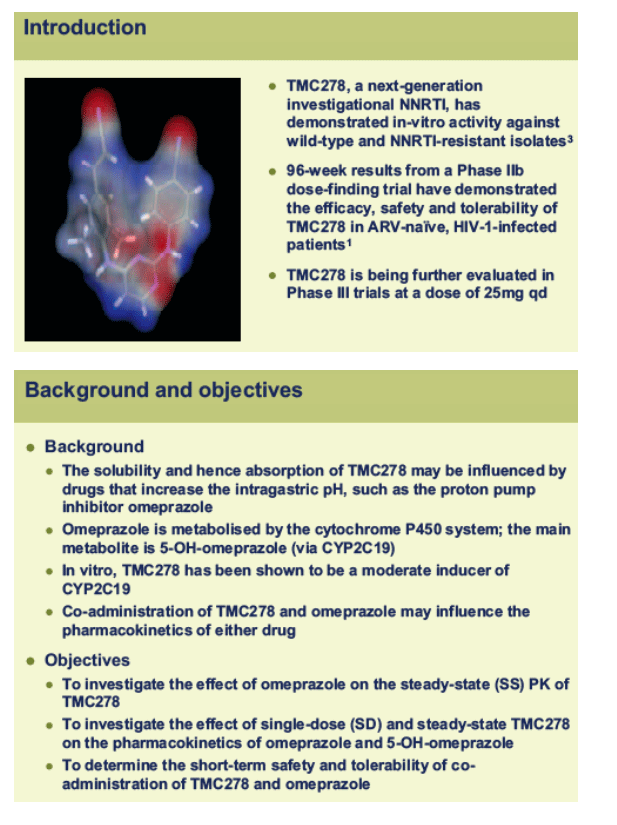
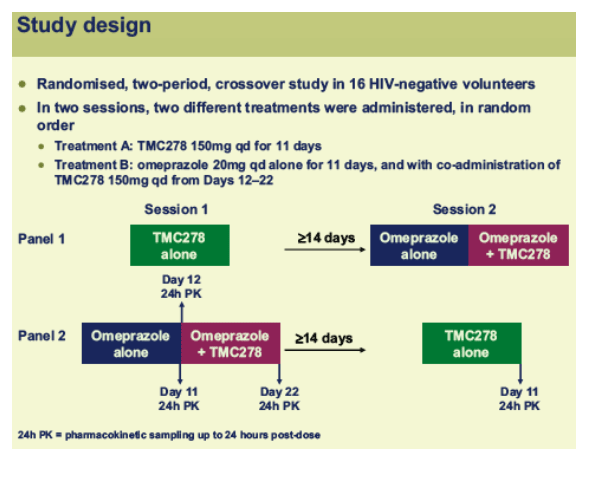
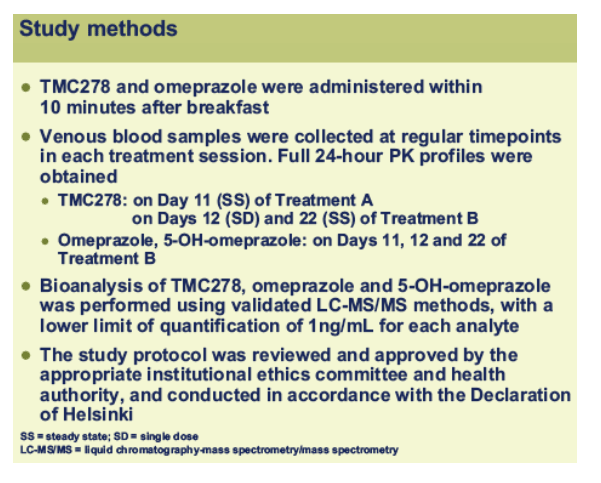
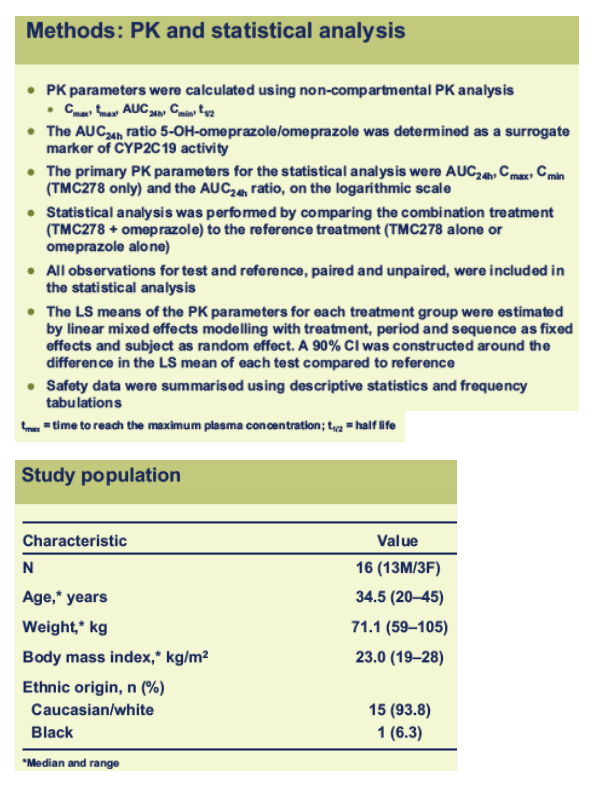
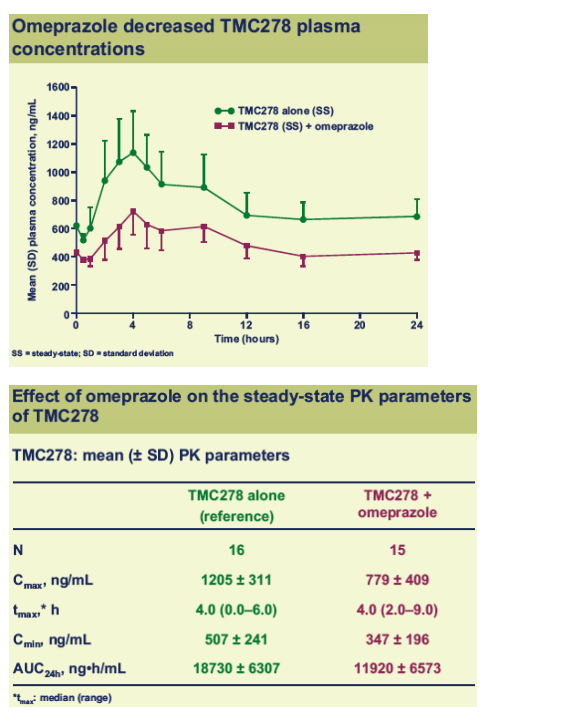
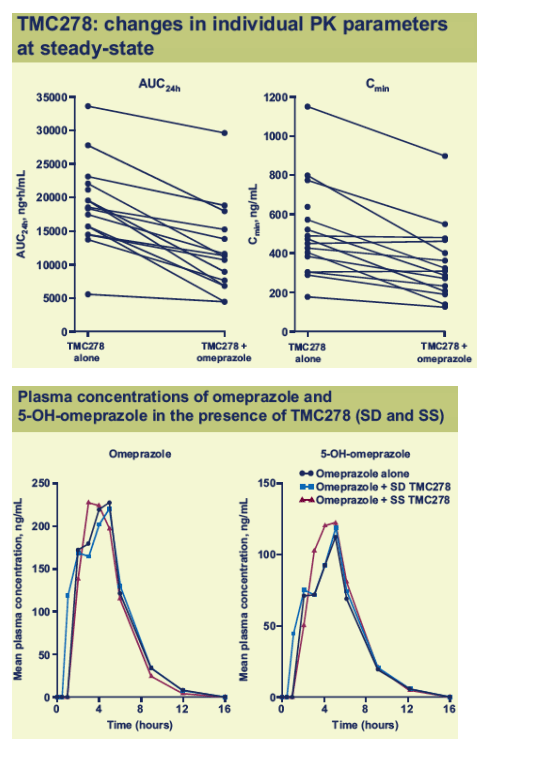
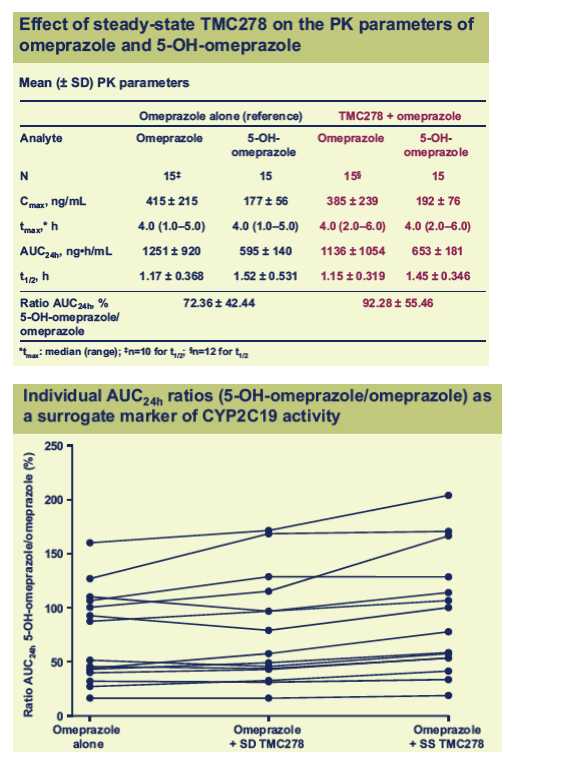
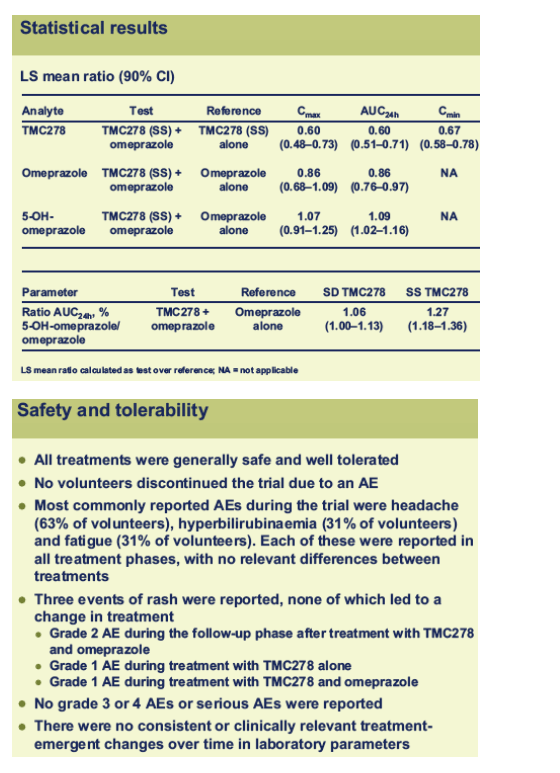
|
| |
|
 |
 |
|
|